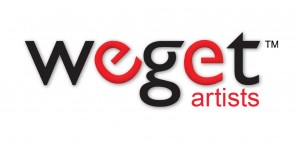
Photo by htmvalerio
On Friday we mentioned new reports that Spotify is planning to go public on the NYSE via a so-called direct listing, with our sources saying that late 2017 is more likely than early 2018. Some notes:
- Why? A direct listing would save Spotify some Wall Street underwriting fees, but that isn’t the music streaming company’s motivation. Instead, Spotify has watched the wild, post-IPO share price ride of consumer-facing companies like Facebook and Snapchat, and believes that a direct listing’s lack of a quiet period could help the stock reach “equilibrium” quicker.
- Why now? Spotify doesn’t have immediate cash needs with $1.7 billion on its balance sheet, but the company is 11 years-old and early shareholders (particularly employees) want some liquidity.
- Wildcard: Spotify raised $1 billion in convertible debt in March 2016 from TPG, Dragoneer and clients of Goldman Sachs. Terms of the deal were described by TechCrunch as “devilish,” with the note-holders able to convert to common equity at a 20% discount to Spotify’s eventual IPO price. Moreover, that discount began climbing by 2.5% per every six months, assuming that Spotify didn’t go public one year after the debt issuance (which it didn’t). But here’s the big rub: Spotify isn’t going to have an IPO price if it does a direct listing.
• Coming attractions: Defy.vc is just weeks away from a first close on over $100 million for its debut fund, according to an LP source. The Palo Alto-based VC firm was founded last year by Trae Vassallo (ex-Kleiner Perkins) and Neil Sequeria (ex-General Catalyst) to focus on early-stage opportunities in the “connected software” space. It also had expected to close the fund on $150 million in Q4, but apparently underestimated the timing difficulties of getting final signatures for a first-time fund. On Friday the firm made its first SEC filing, suggesting a $125 million target.
• Blinded me with science: Andreessen Horowitz’s Vijay Pande talks to Axios about computational biology, as part of today’s Science Stream launch:
We’ve seen the early victories but there is still work to do to be able to take all of the atoms in your body and all the information associated with it and turn it into a format that machines can learn.
In many cases, we don’t have a ton of data. Especially in the area of drug design. You have a lot less data than you would when you are trying to train an algorithm to identify images. How can you look at a drug and tell whether it is successful? We think about drugs as locks and keys – the drug is the key, the protein is the lock. Often you compare keys to each other and you can tell whether it will open the same lock. The idea is that one shot learning can learn that so we can line up two models and tell you if this [drug] is successful, I think this one will also be successful.
• Strange bedfellows: Is there any odder investor/investee relationship right now than the one between GV and Uber? GV is a unit of Alphabet, which not only is suing Uber for trade theft, but also is now partnering with Uber nemesis Lyft on self-driving cars (following negotiations that seem to precede the legal spat).
• Alt spectrum Q&A: Social Capital’s Chamath Palihapitiya explains to Axios how his firm is investing in spectrum without participating in multi-billion dollar FCC auctions.
• Where in the World? Tomorrow I’ll be in New York City to interview Mark Cuban at the Lerer Hippeau Ventures CEO Summit. So if you have questions you think I should ask, send ’em on…
Originally published at Axios
